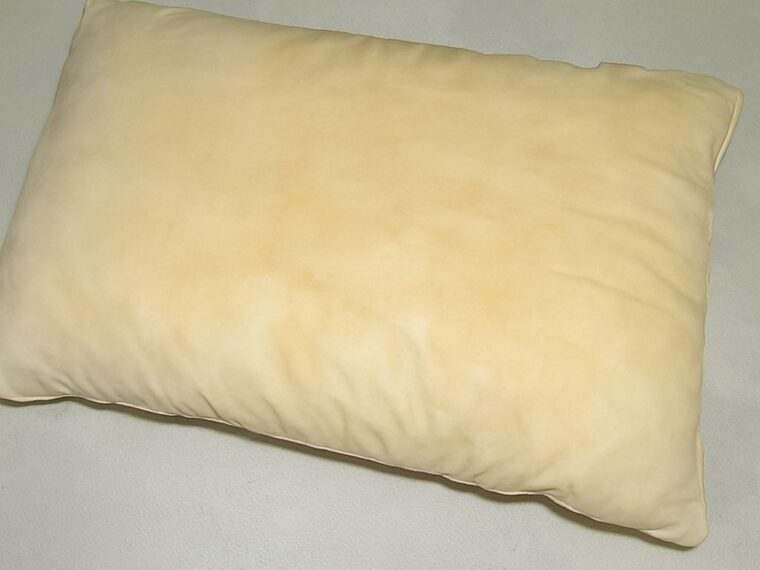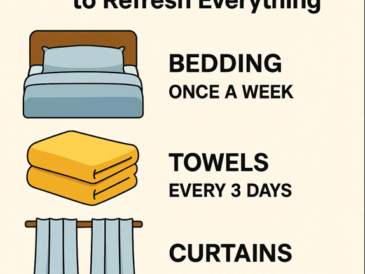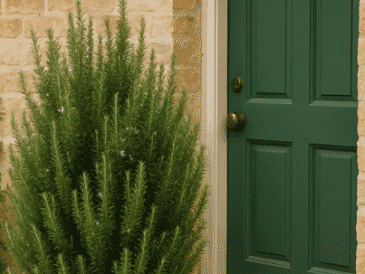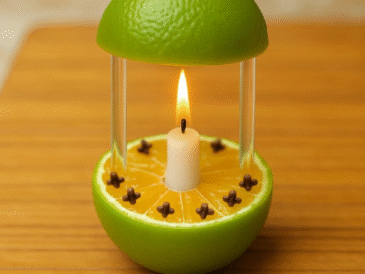White pillows offer a clean, crisp aesthetic that can elevate the look of any bedroom. But over time, even the best pillows develop yellow stains that seem impossible to remove. These stains not only ruin the fresh appearance of your bedding but may also make guests wonder about your cleaning habits—regardless of how often you wash your linens.
If you’re tired of hiding stained pillows behind pillowcases or replacing them prematurely, there’s good news: you don’t need bleach, harsh chemicals, or hours of scrubbing. A simple method using common household ingredients can restore your white pillows to their original brightness—and it takes minimal effort.
Why Do White Pillows Turn Yellow?
Before tackling the stains, it’s important to understand what causes them. The most common culprits include:
- Sweat: Nighttime perspiration seeps through pillowcases and into the pillow itself.
- Body oils and drool: Natural skin oils and saliva can accumulate and discolor the fabric.
- Skincare and hair products: Ingredients from nighttime routines can transfer onto the pillow and contribute to staining.
- Humidity and dust: Environmental conditions may worsen discoloration by encouraging mold and mildew growth.
Over time, these factors combine to create yellowish patches that resist standard washing techniques.
A Natural Cleaning Method That Actually Works
Fortunately, there’s an easy way to restore the brightness of white pillows—no bleach, no harsh detergents, and no exhausting scrubbing. This technique uses baking soda and white vinegar, two natural ingredients known for their stain-lifting and deodorizing properties.
Here’s how to do it step by step.
Step-by-Step Guide to Whiten Stained Pillows
Materials You’ll Need:
- ½ cup of baking soda
- ½ cup of distilled white vinegar
- A large basin, bucket, or bathtub
- Mild laundry detergent
- A washing machine
- Access to sunlight or a dryer with a low-heat setting
Instructions:
- Remove all pillowcases and covers.
Make sure the pillow is bare and free from protective layers. - Fill your soaking container with warm water.
A bathtub works best for soaking two or more pillows at once. - Add the vinegar and baking soda.
Pour ½ cup of baking soda and ½ cup of vinegar into the water. Allow the ingredients to mix and fizz. - Fully submerge the pillows.
Press down gently to ensure they’re completely soaked. Let them soak for at least 30 minutes—an hour is ideal for deeper stains. - Transfer to the washing machine.
After soaking, gently squeeze out excess water and place the pillows in your washing machine. Use a gentle cycle with a small amount of mild detergent. - Dry the pillows thoroughly.
If possible, dry your pillows outdoors in direct sunlight—the UV rays naturally brighten fabric and kill lingering bacteria. Alternatively, use a dryer on a low heat setting, adding clean tennis balls or dryer balls to help fluff the pillows as they dry.
Why This Method Works So Well
The combination of baking soda and vinegar creates a mild yet powerful cleaning solution that breaks down body oils, sweat, and residues without damaging fabric fibers.
- Baking soda acts as a gentle abrasive that lifts dirt and neutralizes odors.
- Vinegar breaks down oily residues and refreshes fabric while also acting as a natural disinfectant.
Unlike bleach or commercial cleaners, this mixture is fabric-safe and non-toxic, making it ideal for pillows used nightly.
Tips to Keep Your White Pillows Stain-Free Longer
While this cleaning method is effective, prevention is always better than cure. Here are a few tips to maintain your pillows’ whiteness over time:
- Use pillow protectors: These create a barrier between your pillow and any oils or sweat.
- Wash pillowcases weekly: Regular cleaning prevents buildup from transferring to your pillow.
- Avoid going to bed with wet hair or heavy skincare products: These contribute to moisture and oil buildup.
- Air pillows in sunlight every few weeks: UV rays help prevent mildew and kill bacteria naturally.
- Wash pillows every 3–6 months: Regular laundering prevents stains from setting in.
FAQs About Washing and Caring for White Pillows
Q: Can this method be used on memory foam pillows?
A: No. Memory foam should not be submerged in water. Instead, spot-clean with a damp cloth and mild detergent.
Q: How often should I clean my pillows?
A: Aim to wash standard pillows every 3 to 6 months, and pillowcases weekly.
Q: Is it safe to mix baking soda and vinegar in the same solution?
A: Yes, in small amounts. The reaction helps lift stains and neutralize odors. Just avoid sealing the mixture in a closed container due to the fizzing action.
Final Thoughts: Restore and Refresh with a Natural Touch
Reviving yellow-stained pillows doesn’t require hours of effort or expensive products. This simple yet highly effective method uses ingredients you already have at home to lift stains and restore brightness—leaving your pillows fresh, clean, and inviting once again.
By understanding what causes discoloration and using a proven natural method to tackle it, you can extend the life of your pillows and maintain a cleaner, more comfortable sleeping environment.




